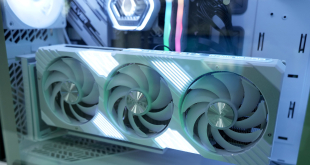Speaking with our correspondents after the world's best technology show ended, one thing became clear. There has been a sea-change in the market and the new world order has been established. KitGuru opens up a nutshell in which to store this new truth.
During the first 10 days of June, the ground shook and the skies dropped rain on Taipei like never before.
Quakes measuring just over 4, just over 5 and also just over 6 on the Richter scale hit Taiwan during Computex itself and the rains came strong and hard just behind the quakes – with up to 70cm of water hitting parts of the island in just 24 hours.
Still, this is ‘old hat' to the locals and they hardly change their daily schedules for such trivial matters like nature.
Nope.
The big change for Computex 2012 was the audience make-up.
Roll back the clock 20 years and the event was aimed squarely at making contacts between China (including Taiwan) and the West of the world.
Computex 2012 seemed to have an audience that was around 98% oriental.
Not only are the Chinese (and neighbours) designing and manufacturing tomorrow's technology today – they have also become one of their most important markets.
The traditional market split for advanced products like graphic cards and high-end CPUs used to be something like 25% to the Americas, 45% to Europe, Middle East, Africa and India (EMEAI) with 30% being sold in Asia Pacific (APAC).
It will be interesting to see how these ratios change going forward, as the Chinese themselves take away more and more of the available production.

KitGuru says: This is a stage that all ‘developing markets' go through. Anyone who loves a Ruby Murray (curry) in the UK will have noticed a huge hike in rice prices over the past 5 years – as demand for Basmati the Indian sub-continent leapt. Will we see a technology price hike in all of our technology prices over the next 5 years – as a direct result of increased living standards and demand in APAC?
Comment below or in the KitGuru forums.
 KitGuru KitGuru.net – Tech News | Hardware News | Hardware Reviews | IOS | Mobile | Gaming | Graphics Cards
KitGuru KitGuru.net – Tech News | Hardware News | Hardware Reviews | IOS | Mobile | Gaming | Graphics Cards


